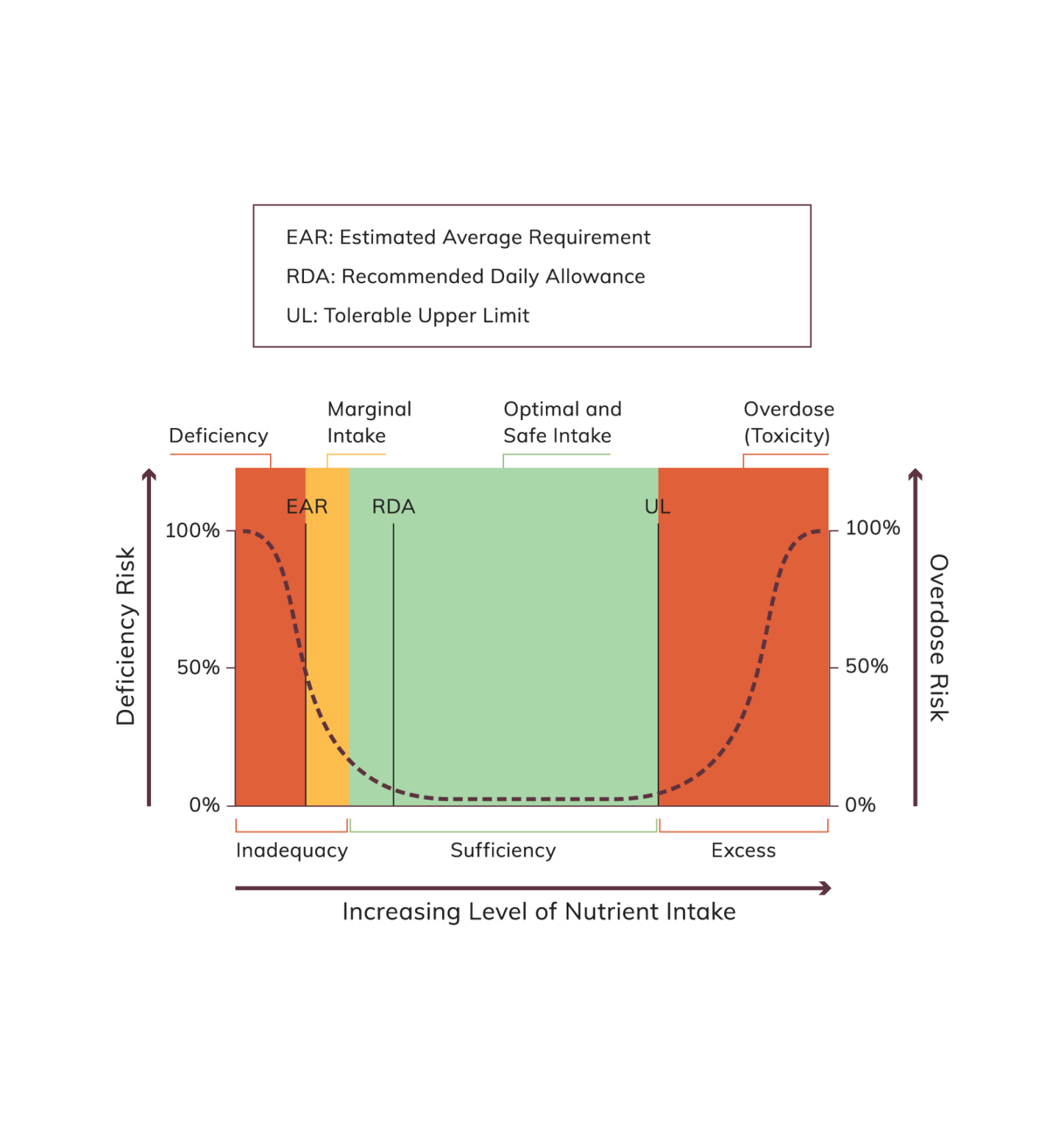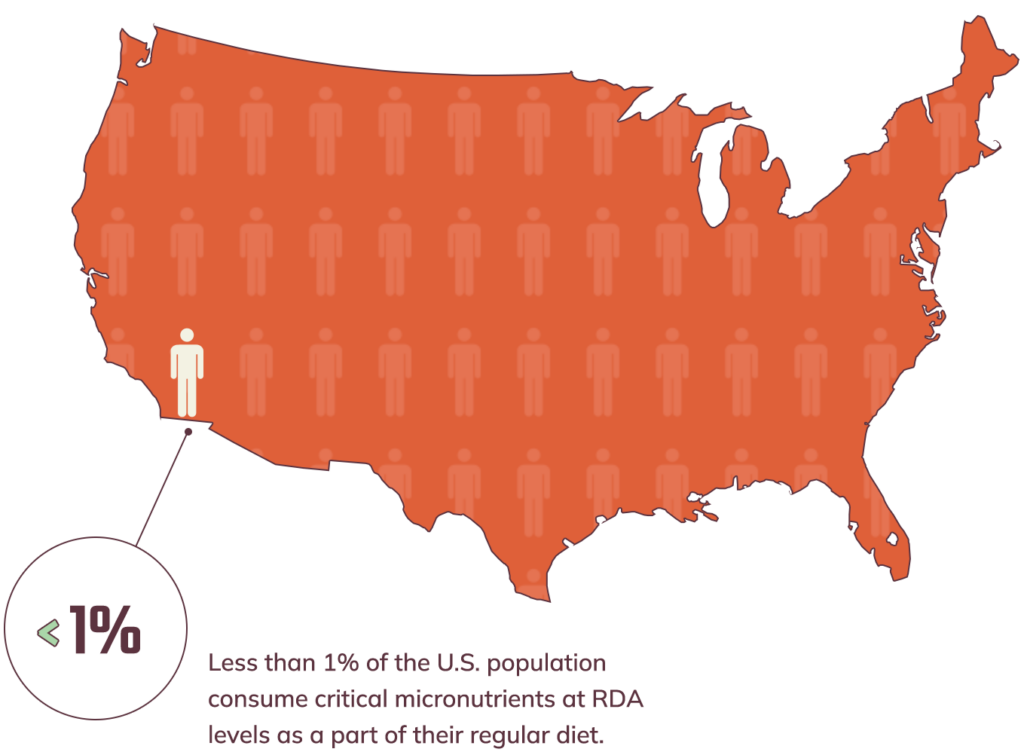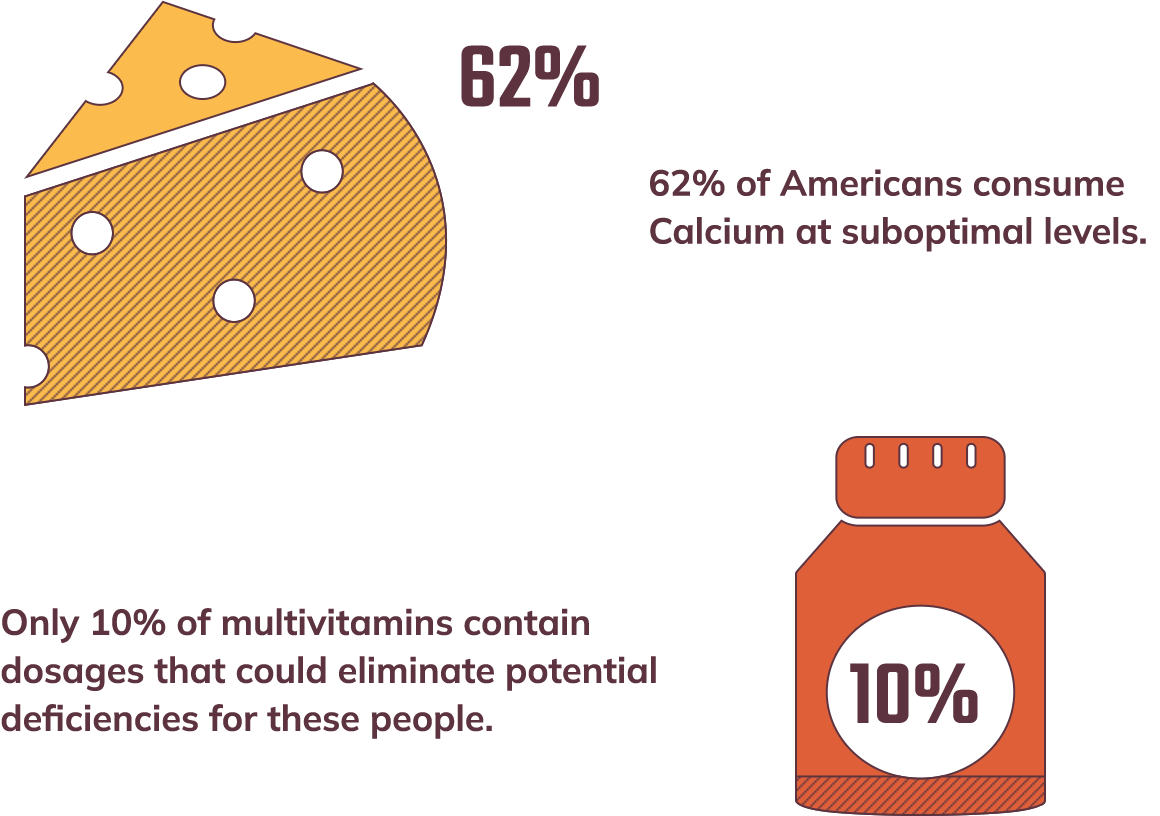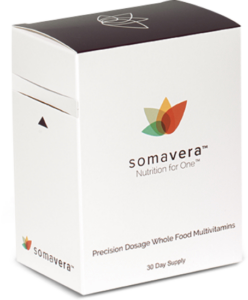Optimal health starts with optimal intake.

What is optimal nutrient intake?
When it comes to nutrients, more isn’t always better. Many assume that maximizing vitamin and mineral intake improves health, but this approach can be harmful. There’s a “sweet spot” for nutrient levels that’s optimal. Staying between the Recommended Daily Allowance (RDA) and the Tolerable Upper Limit (UL) ensures you get enough without overloading your system. Falling below the RDA or exceeding the UL can harm your well-being, making balance the key to good nutrition.
99% of Americans aren’t getting enough nutrients
According to the National Center for Health Statistics at CDC, inadequate nutrient intake is pervasive in the U.S. Essential vitamins such as A, C, D, E, K, and minerals like calcium, magnesium, and zinc are commonly consumed at levels considered inadequate — whether deficient or marginal. In fact, less than 1% of Americans are getting all of these critical micronutrients at optimal (RDA) levels.


Do traditional supplements help?

Supplement use increases micronutrient overdose risk by 10x.



Key Nutrients Are Often Lacking
Conventional multivitamin labels may promise complete nutrition, but a closer inspection often reveals gaps in essential nutrients that many Americans are lacking. For instance, while 62% of Americans don’t consume enough calcium to meet RDA levels, only 10% of best-selling multivitamins provide adequate amounts to address this deficiency.



